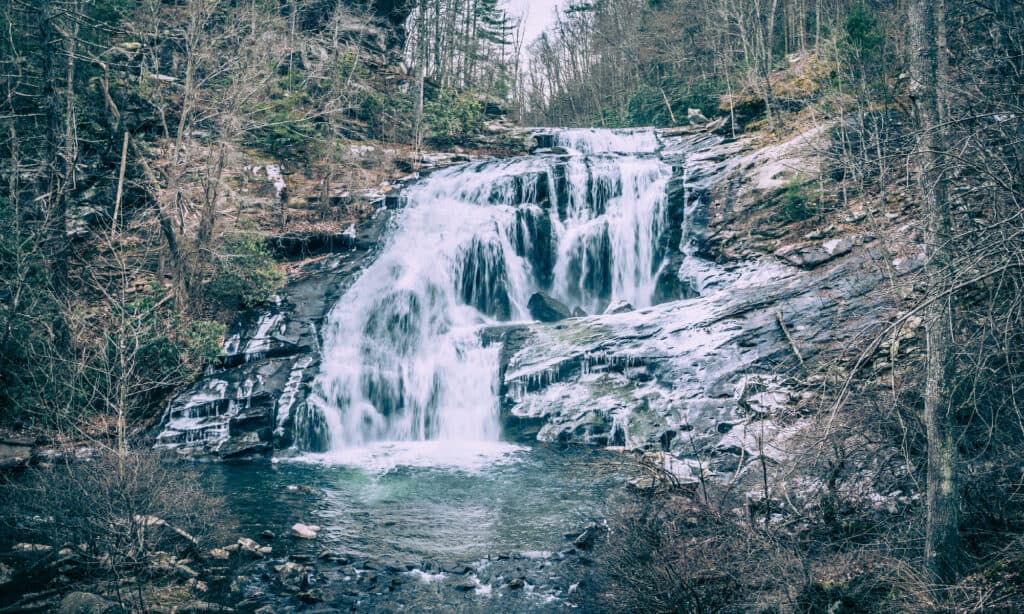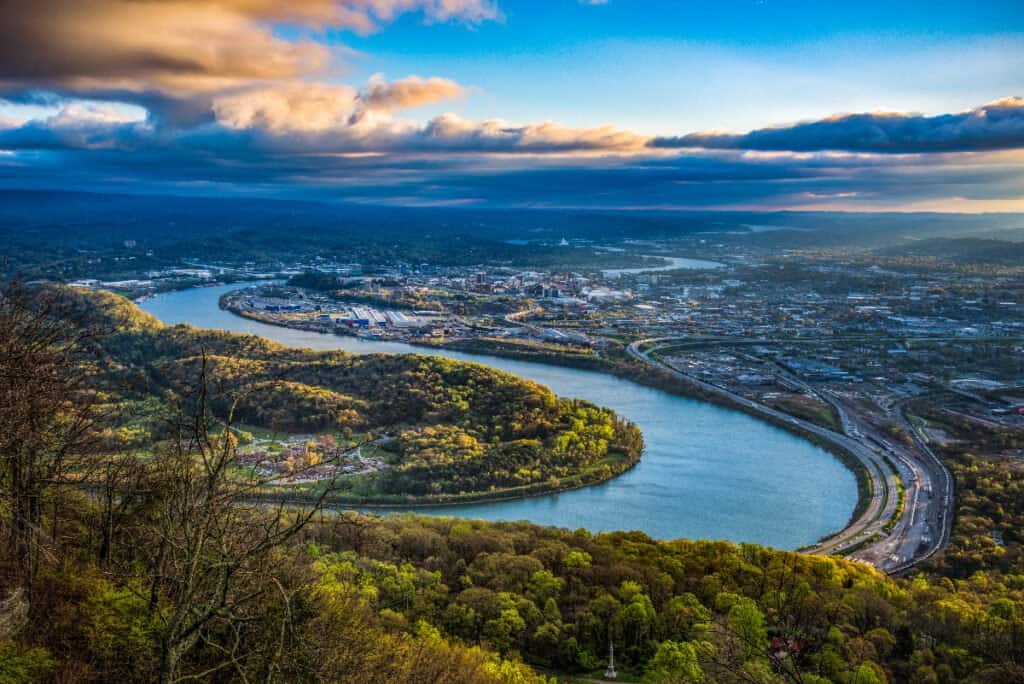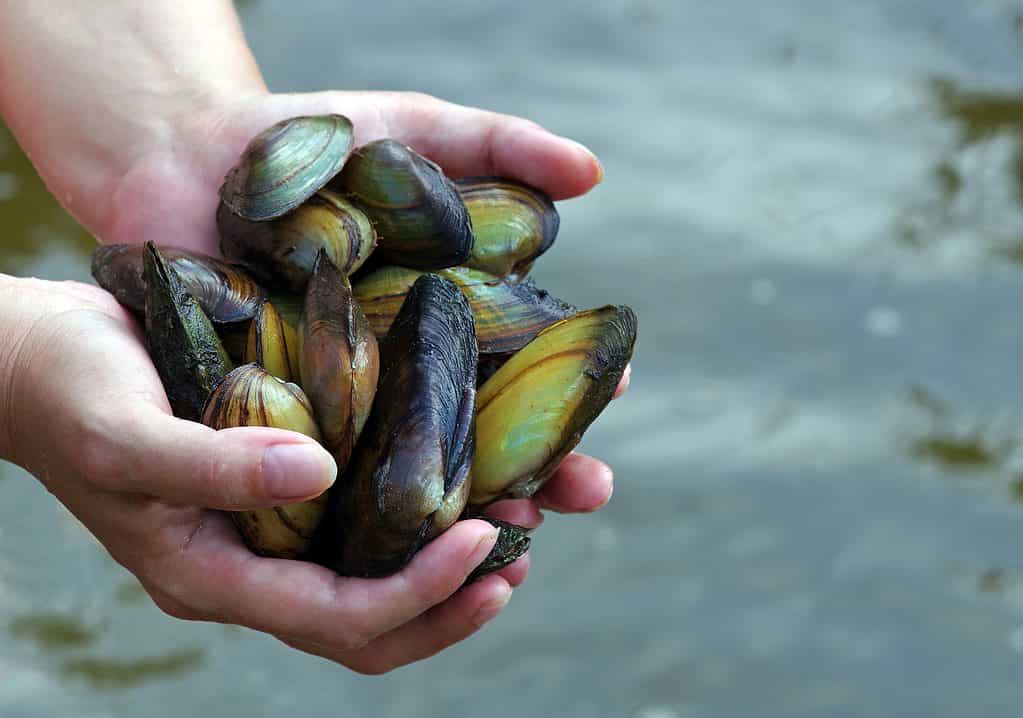The Tennessee River, which is 652 miles long, starts in Knoxville, Tennessee, and flows down to Chattanooga, through the Cumberland Plateau, and ends up joining the Ohio River in Kentucky.
The Tennessee River is the largest tributary of the Ohio River, and it is equal to the Ohio in volume. Locals and visitors use the river for fishing and water sports, and operated by the Tennessee Valley Authority (TVA) are nine dams along it. With so much importance to public utilities in Tennessee, where does the Tennessee River start?
The Tennessee River Starts in Knoxville, Tennessee
The start of the Tennessee River is in Knoxville, Tennessee, at the confluence of the Holston and French Broad Rivers. From there, it flows southwest through East Tennessee until it reaches Chattanooga. Once there, it flows into Alabama and forms a small part of that state’s border along Mississippi.
It then returns to Tennessee and creates the boundary between Middle and West Tennessee. This feature is unique, as few rivers enter and re-enter the state. The river then enters Kentucky, where it separates the Jackson Purchase. Finally, it ends at the Ohio River in Paducah, Kentucky.

The Tennessee River Starts in Knoxville, Tennessee. You can also drive past Bald River Falls in East Tennessee or trek through the Bald River Gorge and watch them fall over 100 feet into the rocks below.
©iStock.com/Patrick Jennings
History of the Tennessee River
The start of the Tennessee River has not always been at the confluence of the Holston and French Broad Rivers. In the past, the Holston River flowed past Knoxville and reached an intersection with the Little Tennessee River until 1933. This convergence was the start of the Tennessee River at the time, and the river was 601 miles long.
The original source of the Tennessee River moved due to a federal mandate. The mandate declared that the river had to flow past the TVA headquarters in Knoxville. Congress said that because the TVA was managing the dams and flood control, the planners should build its base along the banks of the Tennessee River.

The Tennessee River is a famous recreational setting.
©Kevin Ruck/Shutterstock.com
Through Which States Does the Tennessee River Flow?
The Tennessee River flows through 123 counties in seven different states. The seven states through which the Tennessee River flows are Tennessee, Virginia, North Carolina, Alabama, Georgia, Mississippi, and Kentucky. 17% of the river is in Alabama, and the Tennessee River’s basin covers 40,900 square miles.
Along Which Cities Does the Tennessee River Lie?
Some of the most important and largest cities that exist along the Tennessee River are:
- Chattanooga, Tennessee
- Clifton, Tennessee
- Crump, Tennessee
- Harrison, Tennessee
- Knoxville, Tennessee
- Lakesite, Tennessee
- Lenoir City, Tennessee
- Loudon, Tennessee
- New Johnsonville, Tennessee
- Saltillo, Tennessee
- Savannah, Tennessee
- Soddy-Daisy, Tennessee
- Signal Mountain, Tennessee
- South Pittsburg, Tennessee
- Bridgeport, Alabama
- Cherokee, Alabama
- Decatur, Alabama
- Florence, Alabama
- Guntersville, Alabama
- Huntsville, Alabama
- Killen, Alabama
- Langston, Alabama
- Redstone Arsenal, Alabama
- Scottsboro, Alabama
- Sheffield, Alabama
- Triana, Alabama
- Waterloo, Alabama
- Grand Rivers, Kentucky
- Paducah, Kentucky

The Tennessee River runs through Chattanooga, Tennessee.
©iStock.com/benkrut
Numerous cities and towns have sprouted along the Tennessee River to take advantage of its bounty. The most common uses of the Tennessee River are municipal and industrial uses, agricultural uses, and impoundments.
Since 2018, nearly 40 facilities have been allowed to discharge wastewater into the Tennessee River. At the time of writing, 57 agricultural water withdrawal permits for the Tennessee River Basin.
Residents use the Tennessee River for recreation, swimming, kayaking, canoeing, fishing, and river cruises.
The Complex Tennessee River System
The development of the Tennessee River began in 1933,when the TVA was established. The TVA has created a range of locks and reservoirs surrounded by dams. The authorities use these creations for navigation, power, and flood control. The essential dams along the Tennessee River are:
- Kentucky Dam – built in 1944
- Packwick Landing – construction completed in 1938
- Wilson Dam – erected in 1925
- Wheeler Dam – completed in 1936
- Guntersville Dam – the building of this dam ended in 1939
- Hales Bar – construction workers finished this one in 1913
- Chickamauga Dam – workers ended construction of this dam in 1940
- Watts Bar – built during 1942
- Fort Loudoun – constructed in 1943
The main tributaries are the Holston, French Broad, Little Tennessee, Hiwassee, Paint Rock, Duck, and Ocoee Rivers. These rivers all enter from a southern direction. The Clint, Flint, Sequatchie, and Elk Rivers are tributaries and join the mighty Tennessee River from a northerly direction.
Animals in and Around the Tennessee River
The Tennessee River homes a range of fish and other aquatic wildlife, making it a favorite river for many explorers and anglers. The Tennessee River’s most popular residents are smallmouth bass, largemouth bass, striped bass, white bass, sauger, and blue catfish.

Largemouth Bass can be caught on tackle in the Tennessee River.
©Maclane Parker/Shutterstock.com
The Tennessee River is also home to endangered fish like the Palezone Shiner, the threatened Slackwater Darter, and the Snail Darter. Additionally, the endangered Spotfin Chub is close to extinction, and the Harelip Sucker and Whiteline Topminnow have already gone extinct.
Shellfish in the Tennessee River
The Tennessee River, with its tributaries, has some of the world’s most diverse freshwater mussel faunas. The river has close to 90 different species of mussels, with 79 of those species found at Muscle Shoals, a section of the river.
Because of the diverse mussels found in the Tennessee River, it offers a large harvest, and is the source of a massive portion of the country’s annual exports for use in the cultured pearl industry. State regulations ensure that only common species are used, like washboard and ebonyshell.

The Tennessee River contributes large amounts to the cultured pearl industry.
©KRIACHKO OLEKSII/Shutterstock.com
Besides mussels, the Tennessee River is home to a huge range of aquatic snails. There are over 70 marine snails in the river, with half of those species found nowhere outside the Tennessee River.
Up Next…
- How Long is the Tennessee River?
- How Deep is the Tennessee River?
- What Lives at the Bottom of the Tennessee River?
- How Wide is the Tennessee River at its Widest Point?
- Meet 10 Snakes of the Tennessee River
The photo featured at the top of this post is © Kevin Ruck/Shutterstock.com
Sources
- Britannica, Available here: https://www.britannica.com/place/Tennessee-River
- Wikipedia, Available here: https://en.wikipedia.org/wiki/Tennessee_River
- En-Academic, Available here: https://en-academic.com/dic.nsf/enwiki/671252
FAQs (Frequently Asked Questions)
What is the deepest part of the Tennessee River?
It’s difficult to ascertain how deep the Tennessee River is at its deepest, due to the number of dams on the river. Typically, points of rivers before and after dams are particularly deep. The average depth of the river, though, is 9 feet, or 2.7 meters.
Who operates the dams along the Tennessee River
Dams along the Tennessee River are operated by the Tennessee Valley Authority. The TVA was created in 1933 to develop the Tennessee River for flood control and the production of electricity. It is the largest public power company in the United States.
Thank you for reading! Have some feedback for us? Contact the AZ Animals editorial team.






